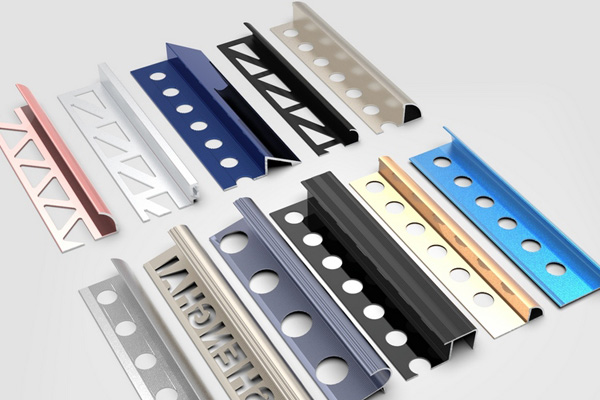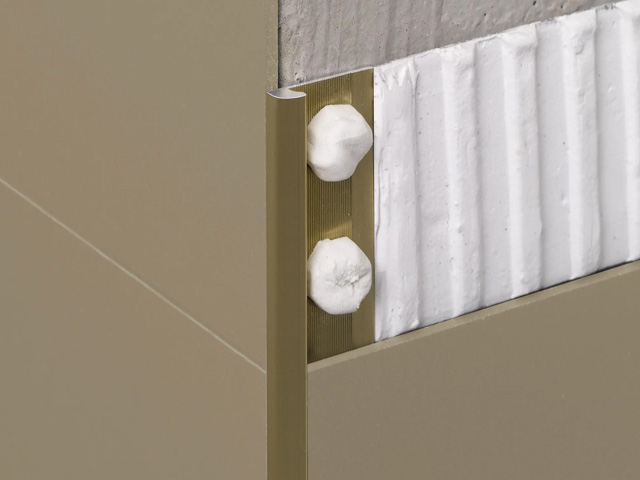Aluminum Bullnose Trim Designed for Decoration
Updated: 11 Apr 2023
What is aluminum bullnose trim
Aluminum bullnose trim is a type of finishing or edging aluminium material commonly used in construction and home improvement projects. It is designed to provide a smooth and rounded edge to surfaces such as countertops, stairs, tiles and wall corners, where they meet other surfaces.The term "bullnose" refers to the curved shape of the trim, which resembles the rounded nose of a bull. Rondec bullnose trim is available in various widths, lengths, and finishes, such as brushed or polished, to match the surrounding surfaces.
Bullnose aluminum trim is popular for many reasons, including its durability, corrosion resistance, and ease of installation. It is also lightweight, making it easy to handle and transport. Additionally, it is a low-maintenance option that requires minimal cleaning and upkeep.
What Types of aluminum bullnose trim
Several types of Schluter bullnose trim are available on the market, used for various purposes such as finishing edges of countertops, stairs, walls, tiles and other structures. Some of the common types of aluminium bullnose trim include:Square
Square edge metal bullnose trim has a square edge and rounded top. It is commonly used for finishing the edges of countertops, stairs, and other structures.
Round
This decorative bullnose Schluter trim has a rounded edge and a curved top. It is often used for finishing the edges of walls, tiles, and other decorative elements.
Bevelled
The bevelled bullnose creates a sloping effect from top to bottom. It is often used for creating a more sophisticated look on the edges of countertops, stairs, and other structures.
Cove
Cove bullnose edge has a concave shape that forms a gentle curve from top to bottom. It is often used for finishing the edges of walls, tiles, and other decorative elements.
Double bullnose
Double bullnose aluminium trim has two rounded edges, one on the top and one on the bottom. It is often used for finishing the edges of stairs, countertops, and other structures, where both sides of the edge are visible.
These are just a few examples of the types of aluminum bullnose trim available on the market. The specific type of bullnose trim used will depend on the specific application and the desired aesthetic effect

What surface treatment can be done for Aluminum Bullnose Trim
Aluminium bullnose trim can be treated with various surface finishes to enhance its appearance, protect it from corrosion and wear, and improve its durability. Some common surface treatment options for aluminum bullnose trim include:Anodizing: Anodizing is an electrochemical process that creates a protective oxide layer on the surface of the aluminium. This process can produce a variety of colors and finishes, including matte, brushed, and glossy.
Powder coating: Powder coating involves applying a dry powder to the aluminum surface and baking it to create a durable and attractive finish. This process can produce a wide range of colors and textures.
Polishing: Polishing can give aluminum bullnose edge a high-shine, mirror-like finish. This process involves using abrasive materials to remove imperfections from the surface of the aluminium.
Brushing: Brushing involves using a wire brush or abrasive pad to create a textured finish on the surface of the aluminum. This process can create a uniform, matte finish that hides scratches and other imperfections.
Painting: Painting can add color and protection to metal bullnose trim. This process can be used to match the colour of the edge to other elements in a room or building.
When choosing a surface treatment for bullnose aluminum edging trim, it's important to consider the desired appearance, durability, and maintenance requirements. Please consult Shenghai Aluminum engineer for the best surface treatment for your specific needs.


